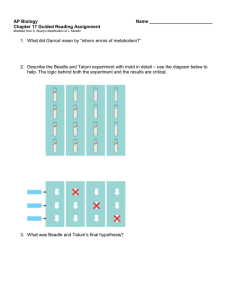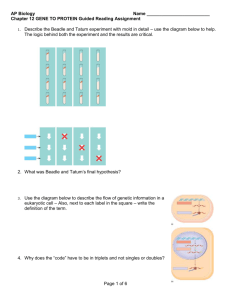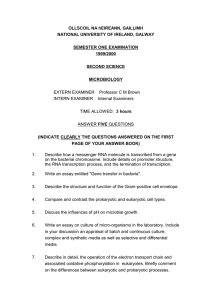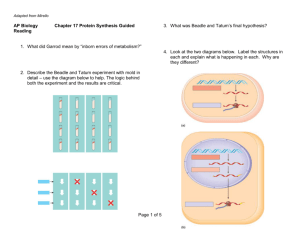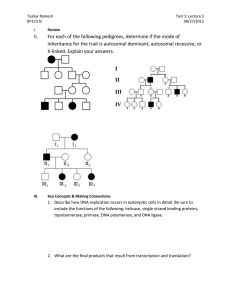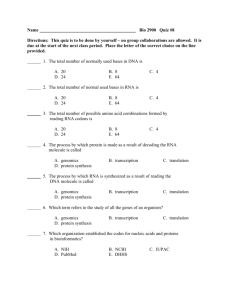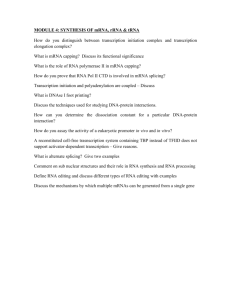Chapter 17 GRA gene to protein edited
advertisement
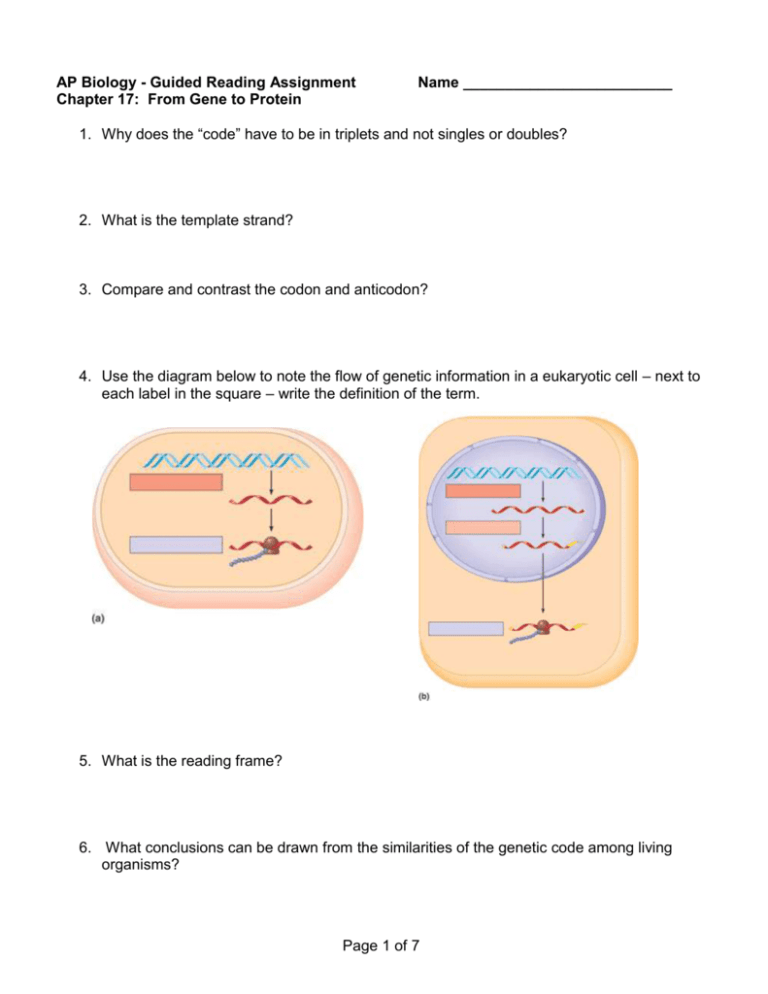
AP Biology - Guided Reading Assignment Chapter 17: From Gene to Protein Name _________________________ 1. Why does the “code” have to be in triplets and not singles or doubles? 2. What is the template strand? 3. Compare and contrast the codon and anticodon? 4. Use the diagram below to note the flow of genetic information in a eukaryotic cell – next to each label in the square – write the definition of the term. 5. What is the reading frame? 6. What conclusions can be drawn from the similarities of the genetic code among living organisms? Page 1 of 7 7. Use the diagram below to understand transcription: Define all terms. 8. Describe the prokaryotic promoter and terminator. 9. Use the diagram below to demonstrate initiation of transcription at a eukaryotic promoter. Write definition of all terms in diagram. 10. Contrast termination of transcription for prokaryotic and eukaryotic organisms. Page 2 of 7 11. Why is important that the promoter be upstream of the transcription unit? 12. Why is RNA processing necessary? 13. What does adding a 5’ cap and poly-A tail mean and why is it important? 14. Define the following terms: a. RNA splicing b. introns c. exons d. spliceosome e. snRNP’s f. ribozymes g. UTR (untranslated region) h. alternative RNA splicing 15. Describe the structure and function of transfer RNA. Page 3 of 7 16. Why is the enzyme aminoacyl-tRNA synthetase important to translation and protein synthesis? 17. What is “wobble”? 18. Describe the structure and function on ribosomal RNA – use the diagram below. 19. Detail the steps of initiation of translation. Page 4 of 7 20. Use the diagram below to detail elongation cycle of translation. Define terms. 21. Use the diagram below to detail the termination of translation – define all terms. 22. What are polyribosomes? 23. What is an example of a post-translational modification of a protein? Page 5 of 7 24. What is a signal peptide? 25. What is a signal recognition particle? 26. Use the diagram below to highlight the signal mechanism for targeting proteins to the ER. 27. Describe the molecular basis of sickle-cell disease – what type of mutation is involved? 28. Define the following terms: a. Mutations b. Point mutations c. Base pair substitution d. Missense e. Nonsense f. Insertions g. Deletions h. Frameshift mutation i. Mutagen Page 6 of 7 29. How has a gene been “redefined” and why? 30. Use the diagram below to help you study the “whole” picture. Page 7 of 7
